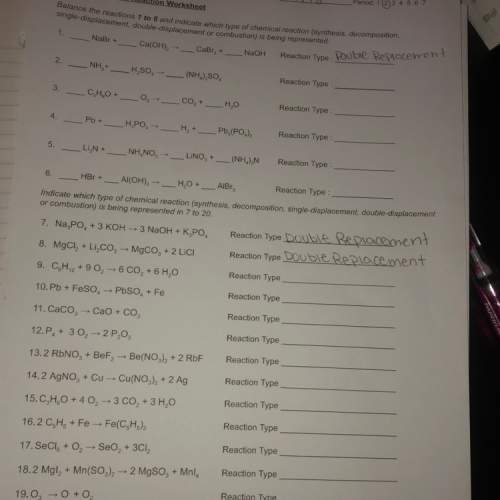A 1.31 mol sample of CO2 gas is confined in a 31.4 liter container at 19.0 �C.
If the vo...

Chemistry, 05.05.2020 16:39 pedroramirezr2
A 1.31 mol sample of CO2 gas is confined in a 31.4 liter container at 19.0 �C.
If the volume of the gas sample is decreased to 15.7 L holding the temperature constant, the number of molecule-wall collisions per unit area per unit timewill
A. remain the same
B. not enough information to answer the question
C. increase
D. decrease
2. A 1.18 mol sample of CO2 gas is confined in a 27.8 liter container at 14.5 �C.
If the volume of the gas sample is increased to 55.7 L holding the temperature constant, the average kinetic energy will
A. remain the same
B. decrease
C. increase
D. not enough information to answer the question
3.A 0.855 mol sample of Xe gas is confined in a 20.5 liter container at 19.6 �C.
If the volume of the gas sample is decreased to 10.3 L, holding the temperature constant, the pressure will increase. Which of the following kinetic theory ideas apply?
Choose all that apply.
A. With less available volume, the molecules hit the walls of the container more often.
B. At lower volumes molecules have higher average speeds.
C. With higher average speeds, on average the molecules hit the walls of the container with more force.
D. For a given gas at constant temperature, the force per collision is constant. Some other factor must cause the pressure increase.
E. None of the Above

Answers: 2


Another question on Chemistry

Chemistry, 22.06.2019 06:00
This flow chart shows the amount of energy that is emitted by each type of light. ultraviolet > blue light > yellow light > red light (maximum energy) (minimum energy) in an experiment, shining which type of light on a strip of metal would be least likely to produce the photoelectric effect? ultraviolet light dim blue light bright red light bright yellow light
Answers: 2

Chemistry, 22.06.2019 10:30
Apiece of metal with a length of 1.42 cm was measured using four different instruments. which of the following measurements is the most accurate?
Answers: 3

Chemistry, 22.06.2019 19:30
To calculate percent by mass, use the equation below: calculate the percent by mass of each element. %n = % %h = % %o = %
Answers: 3

Chemistry, 22.06.2019 23:00
Arectangle has a diagonal 20 inches long that forms angles of 60 and 30 with the sides. find the perimeter of the rectangle. for geometry
Answers: 3
You know the right answer?
Questions


English, 29.06.2019 04:00



English, 29.06.2019 04:00



Mathematics, 29.06.2019 04:00







Mathematics, 29.06.2019 04:00

Mathematics, 29.06.2019 04:00


History, 29.06.2019 04:00

Mathematics, 29.06.2019 04:00

Mathematics, 29.06.2019 04:00




